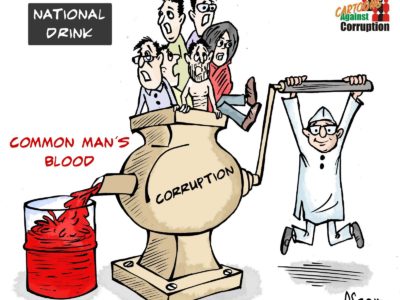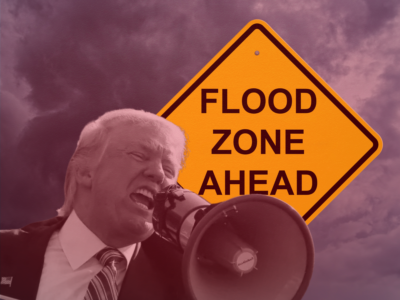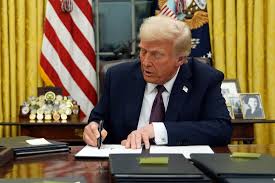The Public Trust Doctrine as an Anti-Corruption Weapon
Everything Old Is New Again
As Rick noted a couple of weeks ago, the California Court of Appeal has recently decided that the public trust doctrine applies to groundwater resources — a long overdue holding that flows (so to speak) pretty much directly from the landmark Mono Lake decision that applied the PTD to surface water. (Since surface and groundwater are hydrologically identical, the burden rests on those who deny the applicability to make the case, which they so far have not done).
trust doctrine applies to groundwater resources — a long overdue holding that flows (so to speak) pretty much directly from the landmark Mono Lake decision that applied the PTD to surface water. (Since surface and groundwater are hydrologically identical, the burden rests on those who deny the applicability to make the case, which they so far have not done).
Environmentalists love the Public Trust Doctrine, and of course will seek to apply it everywhere and anywhere, especially since it could serve as a powerful Takings defense. But one thing about it has jumped out at me, namely, its embrace by courts in several developing countries in the Global South. Scholars have long remarked on the trend, but without a good reason: why should countries as far away as India and South Africa pay so much attention to a sub-national doctrine from the United States (whose jurisprudence they often rightfully criticize). Supreme Courts in particular can apply their own constitutions in protecting the environment, and often have.
So what’s with the Public Trust Doctrine? Well, I suppose that courts like to find doctrine and cases wherever they can, and something with a Roman pedigree just sounds good. But it seems to me that it is particularly attractive in the Global South because it focuses on the problems of corruption that often afflict developing countries.
Consider the landmark case of M.C. Mehta v. Kamal Nath, where the Supreme Court of India first held that the Doctrine is “the law of the land in India.” In that case, a private company constructed a club resort adjacent to the river Beas. When the river overflowed and destroyed the club, the company applied for a new permit, which defendant Nath, then the Minister for Environment and Forests, approved, potentially destroying the ecosystem. Plaintiffs contended that Nath had an interest in the club, which he denied, but also acknowledged that his family held a business interest in the development of the club. Similarly, in South Africa, rampant corruption in resources management means that the public trust doctrine is raised in cases where plaintiffs suspect corruption.
This shouldn’t be surprising, of course. The touchstone of the American public trust doctrine, Illinois Central RR v. Illinois, turns on the Court’s suspicion that the railroad had simply bought off the state legislature to grant it valuable rights in the Chicago harbor. (In an important article, Joseph Kearney and Thomas Merrill argue that while the legislature was probably purchased, there were also good public interest reasons for the legislature to have done what it did, although they have a hard time explaining

why the railroad’s lawyers never raised such arguments before the Supreme Court). And Joseph Sax, in his classic piece, suggested that the doctrine is necessary because of private interests having “undue influence” over the public decision-making.
So then what’s the big deal? Maybe nothing. But a few things about seeing corruption as a focus of the Public Trust Doctrine might be useful:
- It’s really hard to *prove* corruption, but the PTD might essentially bring an easier burden of proof to reverse anti-environmental decisions;
- In those nations where transparency is a problem (and in this, the United States is becoming more of a group member), the PTD could force a more open process to consider the public interest if administrative bodies refuse to reform;
- In addition to asking which resources are covered by the Public Trust, we can also ask in any specific case whether there are reasons to believe that non-market values were given short shrift, or various disadvantaged groups were, well, disadvantaged. If so, then the Public Trust could be used to modify administrative orders or policy decisions — at least until and unless elected officials establish, by a preponderance of the evidence, that whatever decision at issue was indeed taken for public-regarding reasons however one wants to define that.
This probably all proves too much. It might be inviting judicial intervention in a whole series of decisions that are better left to elected officials or those responsible to them. And in many cases, there is little reason to think that judges would be any better than elected officials in any event.
But in the Global South, where corruption is so rampant that instead of talking about “state-building” it is better to think of the state, as Sarah Chayes demonstrated in her outstanding book Thieves of State, as a continuing criminal enterprise, the Public Trust Doctrine could have a particularly important role to play.
Reader Comments
One Reply to “The Public Trust Doctrine as an Anti-Corruption Weapon”
Comments are closed.






You don’t need to look South to find regulatory capture, the results of which are the same as corruption to the affected residents. You can look East to Diamond Bar (AQMD) or North to Sacramento (DOGGR).